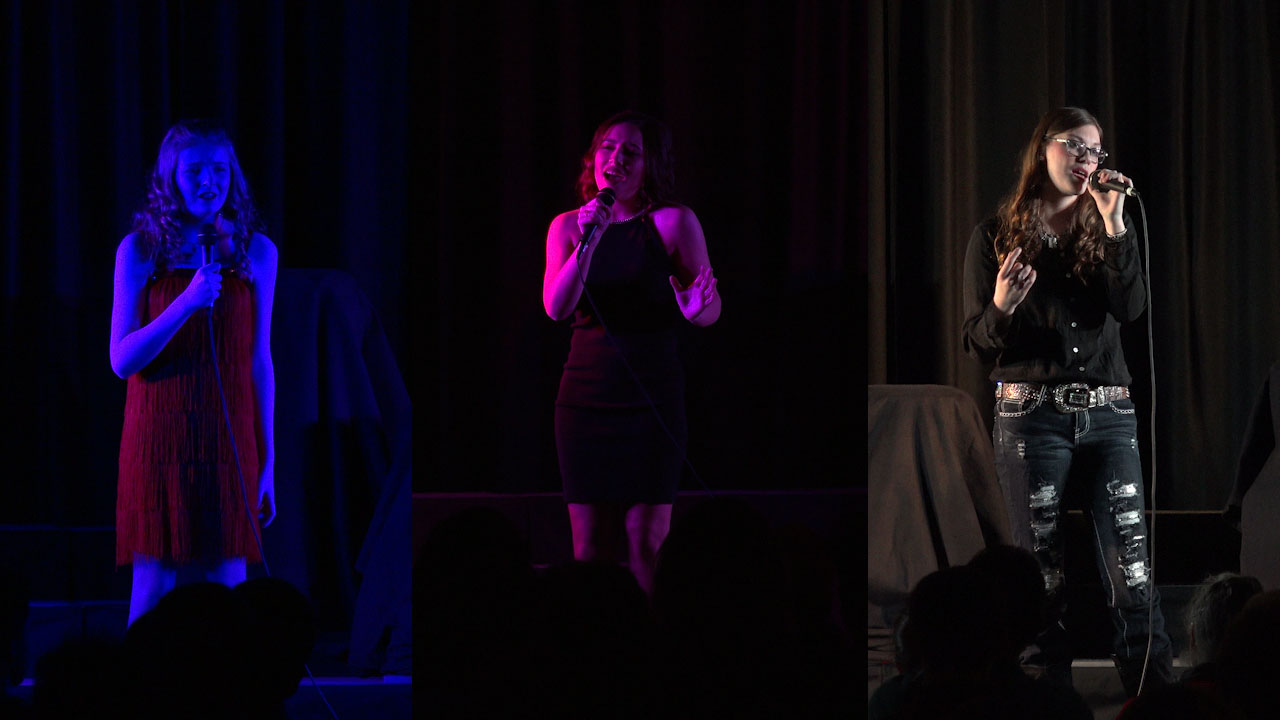- Home
- Premiere Pro
- Discussions
- Re: Correcting "blueburn" - over exposure in conce...
- Re: Correcting "blueburn" - over exposure in conce...
Copy link to clipboard
Copied
A whole song of a set I recorded for a live show has some interesting color effects when blue LED stage lighting is used.
I don't know the technical term for this, just been calling it "blueburn" or "blueface".
My cams were for sure running hotter than need be, but I get a lot of these odd effects with blue lighting.
It is really distracting.
I would love to know more info on this phenomenon and how to correct it.
(is it my cams optics? my gain settings? white balance? angle of the lighting ? a property of physics?)


 1 Correct answer
1 Correct answer
I would love to know...how to correct it.
Get the lighting designer to use different lighting.
That's the only method I've found.
Copy link to clipboard
Copied
What are the scopes showing for those clips? Parade RGB & Waveform RGB might be interesting to see. Also Vectorscope YUV
Neil
Copy link to clipboard
Copied
The best fix for this type of LED issue I have found to be the colour equivalent of an audio notch filter using the Lumitri effect as below:
Also have a look at
Copy link to clipboard
Copied
Blue LEDs are effectively monochromatic, so if that's the only significant illumination then you can adjust the hue and brightness (as if it began as a B+W shot) but there's no way to recover the 'natural' color information because it's simply not there. In the (good) old days of tungsten with gels, blue was never pure blue and there was hope to suck out the vestiges of an R and G channel. In video we're all obsessed with the CRI of a light source, and for good reason. Those blue LEDs are second only to lasers as a textbook example of bad CRI.
In Richard's example there are clearly some well-balanced full-spectrum washes on the dancers, but in your photos it looks to be mostly blue spotlights and a couple of low-CRI orange floor cans. I'm sure it looked good to the audience, but..meh.
Also the lighting was bright enough to saturate your sensor, especially on the girl's face in image 1. That stymies even the option of hand-tinting the skintones back in (as for example is done with old movies), because you need a working tonal range in monochrome to begin that process.
Shooting it again you could deal with the over-saturated sensor, but nothing in-camera will get around the monochromatic light sources. Unfortunately what looks good to a stage designer tends to be unfilmable, one reason why a lot of DPs actually film the rehearsals so they can change the lighting to ensure a workable CRI throughout. It's easy to make a scene into blue in post, but the opposite is not.
Copy link to clipboard
Copied
I would love to know...how to correct it.
Get the lighting designer to use different lighting.
That's the only method I've found.
Copy link to clipboard
Copied
Yeah, not much you can do after the fact. The LED colors are so pure that they confuse the image sensor in the camera. It just doesn't even know what to do with such unnatural lighting! I shot a singing competition and lighting was either pure blue or pure magenta at times, and singer looked like a blueberry.
I actually had to STOP THE SHOW and make them turn on white lights to keep from ruining the entire video! That was awkward.
In post, I figured I would simply use black and white for the "blue" girl, but that didn't work since there is absolutely no detail in the image. The blue areas are solid blue and changing to b/w just makes those areas solid gray.
This event was a learning experience! I don't shoot much video anymore and had not been exposed to LED lighting before last year. The light stands on the stage had CLEAR lights, no gels, so I assumed they were white (as they had been in years prior for same event) and it was quite a shock when the show started!! It will be easy for readers to say "Why didn't you do a light check beforehand?"
A few reasons:
1) Late afternoon - major sunlight coming into room from windows all around stage prior to show start
2) Room lights on for workers and guests arriving, could not turn off
So, prior to it actually getting dark out about the time the show was to start, room lights could not be turned off and no way to stop sunlight coming in, so could not simulate what would happen for the actual show. Yes, I could've talked to lighting person, but did not expect the crazy colors of LED!! Now I know better...I've shot stage events for 25+ years and have never told a lighting person how to light things, and never had to! If the incandescent lighting was bluish or reddish, I could clean it up pretty well in post, not a problem. But LED, OMG this is a horrible issue!!
Thanks
Jeff
Find more inspiration, events, and resources on the new Adobe Community
Explore Now